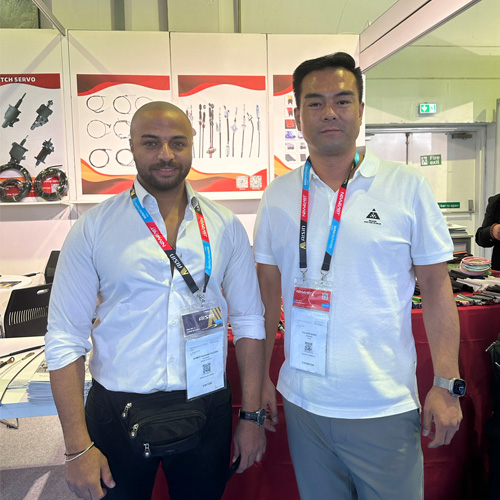Understanding Gas Pedals and Throttle Cables in Modern Vehicles
Understanding the Gas Pedal and Throttle Cable The Heart of Vehicle Performance
The gas pedal and throttle cable are crucial components of a vehicle's performance, playing an essential role in how a driver interacts with the engine and ultimately controls the vehicle's speed. The relationship between the gas pedal and throttle cable can be likened to the connection between a musician and his instrument; they work together to create a harmonious experience on the road.
The Function of the Gas Pedal
The gas pedal, also known as the accelerator pedal, is a key interface for the driver. When a driver presses the gas pedal, they are signaling the engine to deliver more power. This action increases the engine's revolutions per minute (RPM), allowing the vehicle to gain speed. The design of the gas pedal is ergonomic, allowing for smooth acceleration that is easy to control. Modern vehicles often employ electronic throttle control systems, which enhance the responsiveness and precision of acceleration.
In traditional mechanical systems, the gas pedal is directly connected to the throttle valve via a throttle cable. As the pedal is pushed, the cable pulls the throttle open, allowing more air (and fuel) into the engine, thus generating more power. However, in newer models, the gas pedal may simply send a signal to an onboard computer, which then regulates the throttle electronically. Despite advancements in technology, the fundamental purpose remains the same to modulate engine power and vehicle speed based on driver input.
The Role of the Throttle Cable
The throttle cable serves as the physical link between the gas pedal and the throttle body, which controls the airflow into the engine. This component is essentially a flexible cable that transmits the pedal's motion to the throttle mechanism. In a traditional setup, when the gas pedal is pressed, the cable pulls on the throttle plate, allowing more air to enter the intake manifold, which is mixed with fuel for combustion.
Throttle cables may require regular maintenance and periodic replacement, as they can wear out or fray over time. A malfunctioning throttle cable could lead to undesirable driving experiences, such as a lack of power, erratic acceleration, or in some cases, total throttle failure. This underscores the importance of understanding how these components function together to ensure optimal vehicle performance.
gas pedal and throttle cable

Modern Innovations
With advancements in automotive technology, many manufacturers have moved away from mechanical throttle cables in favor of drive-by-wire systems. This technology eliminates the physical cable and instead relies on electronic signals to control the throttle position. Sensors on the gas pedal detect the amount of pressure applied and send this information to the engine control unit (ECU), which adjusts the throttle position accordingly.
This shift has several advantages, including improved fuel efficiency, reduced emissions, and enhanced drivability. Electronic systems can also incorporate features such as traction control and stability management, integrating the gas pedal's functionality with advanced safety measures.
The Driver's Experience
The connection between the gas pedal and throttle cable—or the electronic equivalent—directly influences the driving experience. A responsive gas pedal allows for smooth acceleration and effortless merging onto highways, while any lag or inconsistency can lead to frustration and reduced confidence on the road. Enthusiastic drivers often appreciate the tactile feedback of a mechanical linkage, which provides a direct connection to the vehicle's power delivery.
Moreover, understanding the functionality of these components aids drivers in troubleshooting issues. For example, if a vehicle experiences delayed acceleration, it may be worthwhile to inspect the throttle cable or the electronic components for debris or failures. Regular maintenance of these systems is crucial for ensuring reliability and performance.
Conclusion
In summary, the gas pedal and throttle cable play an integral role in vehicle performance and driver experience. Whether through mechanical connections or advanced electronic systems, these components allow drivers to harness the power of their engines with finesse and precision. As automotive technology continues to evolve, the fundamental relationship between the driver, the gas pedal, and the throttle will remain a vital aspect of the driving experience, highlighting the importance of understanding these components for any car enthusiast or regular driver.
-
Upgrade Your Control with Premium Throttle CablesNewsAug.08,2025
-
Stay in Control with Premium Hand Brake CablesNewsAug.08,2025
-
Experience Unmatched Performance with Our Clutch HosesNewsAug.08,2025
-
Ensure Safety and Reliability with Premium Handbrake CablesNewsAug.08,2025
-
Enhance Your Vehicle with High-Performance Clutch LinesNewsAug.08,2025
-
Elevate Your Ride with Premium Gear CablesNewsAug.08,2025
